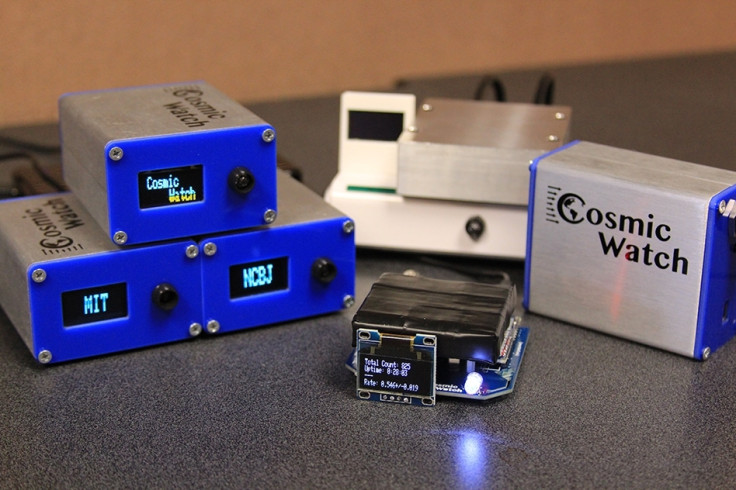This DIY muon detector can catch cosmic particles in virtually all environments
MIT researchers develop low-cost muon detector to catch particles from space.

Scientists at MIT have developed a pocket-sized device to detect charged particles, or muons from outer space.
Cosmic rays from supernovae and other deep space phenomena turn into charged particles after coming in contact with Earth's atmosphere. These falling particles last only for a fraction of a second but spread like a light drizzle in the atmosphere around us. Some ghostly particles even touch the surface and penetrate into it, passing through rocks and ice.
Typical muon detectors are large and bulky, but the one from MIT - the CosmicWatch - is small, requires little power and uses common electrical parts, according to MIT News.
The device can catch these particles in virtually any environment and is extremely affordable too, costing just around $100.
Once turned on, CosmicWatch lights up and counts particles passing through it. Researchers have listed parts and step-by-step instructions to build the instrument on its website, and say first-timers can get it up and running in four hours, while those who've done it once can assemble and calibrate the whole thing within one hour.
The team, led by MIT graduate Spencer Axani, designed the device as a small add-on to enhance the sensitivity of IceCube, a huge particle detector buried deep underground in the South Pole. IceCube's job is to detect subatomic particles called neutrinos and the small device aided its search by allowing scientists to tag the precise position of muons and sift out those particles to look for neutrinos.

So far, the team has supplied as many as 100 detectors to high-school and college students, who have sent the instruments up on planes and air balloons to measure muon rates at high altitudes. They have even taken the device underground to see how the particle count varied.
"At sea level, you might see one count every two seconds at sea level, but on a plane at cruising altitude, that rate increases by about a factor of 50 — a dramatic change," Axani says. "From the measured rate you can back-calculate what the actual altitude of the plane was."
A team at Boston University also plans to send one of these devices up to 100,000ft on a suborbital rocket. However, the ultimate goal for Axani and his team is to use these detectors for muon tomography – the technique which creates 3D images of material surrounding a detector using the distribution of muons. The method has previously been used to uncover hidden structures.






